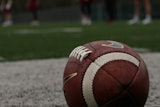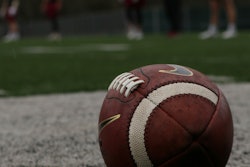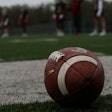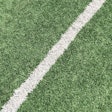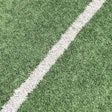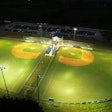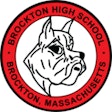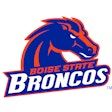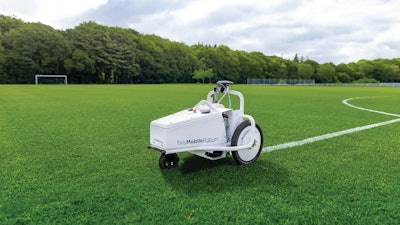
Once players milling about Greater Nevada Field during batting practice notice the robot moving this way and that across the right-field spectator berm, the questions buzz in on head groundskeeper Leah Withrow like a two-seam fastball.
“What is that?”
“It’s just the auto mower that mows the berm,” Withrow, in her current position with the Triple-A Reno Aces since 2020, tells them.
“What?”
“It’s like a Roomba, but for the grass.”
“That’s a thing?”
“Oh, yeah,” Withrow answers.
“It blows their mind every time I have to try to explain it to them,” she says. “It’s fun.”
The fun might just be starting for Withrow and other turf managers who consider themselves early adopters in the turf care robotics game. Autonomous mowers and painters are beginning to roll their way into the sports space with greater frequency, and it couldn’t be happening at a better time.
Take it from San Francisco Giants head groundskeeper Greg Elliott, who was among the first to use robotic mowers on a top-level professional game field, the entire turf care industry finds itself in need of any help it can get. “You’re seeing it in city parks and recreation — there’s fewer people, fewer positions available, and they’re required to do more work,” Elliot says. “All the turf schools now, the numbers of people are down, programs are closing. It’s a major issue. And if you ignore technology, you rely on that human resource. I think in general, the entire industry is kind of underserved, and there’s becoming a gap in terms of people coming out of college and wanting to do this. For the people who are left, we’re aging, and we need to find creative resources, and I think this is what you’re going to see.”
Growing efficiency
 Photo courtesy of the Reno Aces
Photo courtesy of the Reno Aces
Elliott’s autonomous mowers, manufactured by Husqvarna, feature razor-like blades affixed to rotating disks, providing a quality of cut some liken to that of a reel mower. “It does a wonderful job,” he says. “You’re using a really fine blade, so the clip of cut is there. You’re mowing every day. You don’t have a lot of clippings. You’re not collecting clippings, so you’re actually returning them back into the soil to be repurposed and break down as fertilizer for the soil.”
An app on Elliott’s phone allows him to map out different areas on the field and at what height he wants the robot to cut them. “You can section it off to where we want the outfield at an inch and a quarter, we want foul territory at one inch, and one mower will do the different heights and adjust as it goes,” he says. “You just have to create the different stations and then set your mowing heights.”
In some respects, the robots outperform traditional mowing equipment. Says Elliott, “We’ve seen a lot of agronomic benefits from them, and the weight is the biggest thing we’ve seen. You basically drop a zero on the weight. A [ride-on] mower may be 1,800 pounds. This is 180 pounds. It’s so much less weight on the turf, and you’re not locking up the soil. We’re not seeing compaction. We’re not seeing yellowing. We’re not seeing chlorotic conditions from the other mowers.”
And there’s a ripple effect in terms of other turf-care practices. Elliott’s aeration schedule and methods can be less aggressive. “We have stopped pulling cores,” he says. “We do more of an integration method where we top dress first and then work it into the sod layer and the soils. We’re introducing sand into the profile more so than removing hard soil, so we’re making the entire soil more accepting of water. We’re using quarter-inch solid tines and we’re top dressing with 25 tons monthly and then poking it into the profile.”
Rain once dictated when the field could be mowed. Not anymore. “What I’ve realized in my time over the years is we are moisture managers. You have to learn to manage the moisture on your surfaces. You want to water less, save moisture, save natural resources, and give the plant just what it needs to survive,” Elliott says. “A lot of times you get rain in some areas, you have to mow your grass, and you compact. Well, I can go out and mow with these mowers in the rain. We can mow and go.”
That freedom enhances the single most important horticultural practice on the turf manager’s to-do list, according to Elliott. “The benefits of mowing your grass far outweigh anything you can do, but it’s expensive,” he says. “It’s one of the most expensive things you do. You buy a $100,000 mower. You train an operator. If that person is in a union, that’s $40, $50 an hour to operate that piece. But if you automate it, you can make it lighter, you can do it in the middle of the night. you can go 24 hours a day. Go mow, go charge up. It’ll return to where it was and start mowing again. You can piecemeal it out, and you can make it more efficient. And you can use that operator to do something more important, like top dressing, maybe a fertilizer application, maybe even rebuild an irrigation line. For me, it’s not so much return on investment. It’s employee reallocation.”
Same goes for Withrow. “Instead of spending two hours on the mower, you have the mower running overnight. You come in, your field’s already cut and now you have a whole body for two extra hours that day. It’s giving you more hands to do other work. That’s what we got ours for,” she says, adding that the Aces haven’t yet introduced their autonomous mower to the game field, but it already is playing a significant role. “Because people pay money to sit on our seating berm, it has to look nice. I was losing a body every two days to go spend two hours mowing and weed-whacking and getting that cleaned up. Now my auto mower runs every day up there, and I get a whole body back on the field doing stuff I actually need to do on a game day. It saves me so much time and gives me another body to do what’s important.”
Paint by numbers
Photo courtesy of Texas A&M University
Time and labor savings can be even more substantial when introducing robotics to the field-painting process.
“It’s just another tool in our arsenal,” says Nick McKenna, Texas A&M University’s assistant athletics director in charge of sports fields, who began deploying a Turf Tank GPS-guided autonomous painter late last year. “We’re starting to implement it a little bit more with our practice football fields.”
McKenna describes the old-school method of measuring staked lines of string and painting by hand, a weekly process that took up to nine individuals at least 90 minutes to cover six acres worth of practice fields. “Well, I’ve got a single guy out painting one of our fields right now by himself with just that robot,” McKenna says. “This is just doing like the generic out-of-bounds lines, yard lines, hash and tick marks, but he can do that in an hour by himself. Even if I still have to have three other people do some of the rest of the components [i.e. numerals], I have still been able to free up three or four other people, and they can go concentrate on other areas. In our level of service, we can continue to raise our standards because we just now freed up that manpower to focus on other areas.”
The robot won’t tire out easily, either. “I have three batteries that I can remove and exchange, and they can give me four to six hours of life per battery,” McKenna adds. “We have enough battery power to go through and paint anything and everything we would need with our robot at any given time.”
Something as simple as a PVC marker embedded in the ground to signify past measuring efforts is rendered obsolete. “We’d keep markers in our fields for reference points just because it made our initial layout measuring easier. That was before the robot,” McKenna says. “Those are things that get in the way when we go to do cultural practices — when we aerify, when we vertical mow, when we slice. You either have to work around them, or you have to pull them out. Now you can move away from having to have all this extra stuff in the ground.”
When it comes to a televised home football Saturday, McKenna prefers to paint the game field twice to make lines and logos pop for the cameras. The robot gets that two-part process started. “If you can get away with a light base coat that the robot puts out, then we can come back with just our one-time, brighter, thicker coat and everything’s bright and vibrant. Not only does that save us on paint, it saves us on labor and it’s better for the grass. So, we’re now adding a lot of options and versatility. That’s why I say it’s another tool in our belt that we can use.
“I’m probably not going to send my robot to go out alone and paint Kyle Field for the Alabama football game. But what I am going to use it for is when spring football starts, and we go out to paint Kyle Field for the first time, because we haven’t painted it since the last football game. Rather than have to measure everything out, we’ll let the robot do that initial layout, go out and get everything set precisely based off GPS. And then when it comes time for the actual game, we’re still going to go to our old-school process of painting by hand, mostly for the aesthetic.”
Work smarter, not harder
An old groundskeeper adage, “Worker smarter, not harder,” takes on new meaning in this age of artificial intelligence and robotics. Withrow admits to being a little creeped out by what she witnesses her mower accomplishing on the berm at Greater Nevada Field.
“It’s very smart, and it will remember,” she says. “I can see on my phone its tracks and where it’s been that day. It won’t go over the same paths twice. It might cross over paths it’s already cut, but it will not go over the same thing if it already knows it cut there. Same thing if it continually gets stuck in one area or it knows it’s going to hit something, it will remember after a few times of it hitting it and it won’t do it again. It’s got an internal memory. After you use it a certain amount of time, it remembers certain things, which is kind of creepy.”
It also knows that as its charge drops to 20 percent, it needs to travel back and reconnect to its charging station, which it does automatically.
Withrow recalls talking recently to a golf course superintendent whose pro shop phone kept ringing off the hook with calls of concern “because a random mower driving itself on the fairway would freak so many people out.”
It’s safe to say sightings of such equipment will be increasingly commonplace — and accepted by the witness as standard procedure — on golf courses and sports fields at all levels moving forward. “I know a few universities have switched, high school districts, same as parks and rec, because of the amount of area they have to cover compared to the amount of people they have to cover it,” Withrow says. “The autonomous technology has really helped fill in that labor shortage gap for those people.”
















